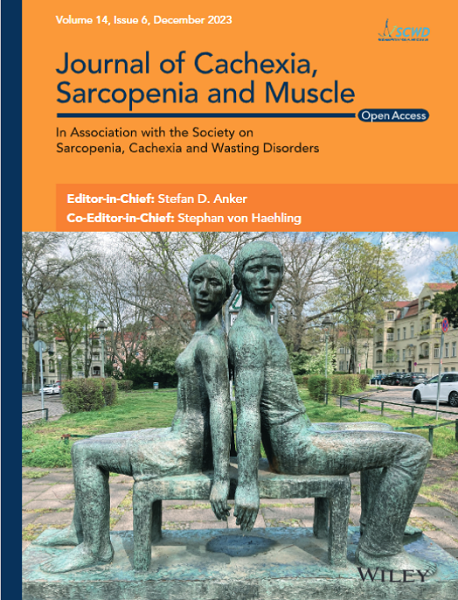Walking Speed and Risk of Cancer in Two Prospective Cohort Studies
Abstract
Background
Walking speed is a reliable marker of sarcopenia and a strong predictor of mortality, but its relationship with cancer incidence remains largely unexplored. We aimed to investigate the association between walking speed and the risk of any cancer and five common cancers, including lung, breast, colorectum, prostate, and stomach, and to explore potential mediation by biomarkers of inflammation, and lipid and glucose metabolism.
Methods
The primary analysis was conducted in 431 598 participants from the UK Biobank (mean age 56.3 [SD 8.1] years at baseline), and the generalizability of findings was further tested in 1311 participants from the Hong Kong Osteoporosis Study (HKOS; mean age 57.8 [SD 11.9] years). Walking speed was self-reported in the UK Biobank and measured using a timed 6-m walk test in the HKOS. Incident cancer cases were identified from electronic health records. We used Cox models, adjusted for age, sex, height, body mass index, socioeconomic, lifestyle factors, family history of cancer, and grip strength, to estimate the association between walking speed and cancer incidence. Single and multiple mediator models were performed in the UK Biobank to examine the mediating effects of C-reactive protein (CRP), white blood cell (WBC) count, total cholesterol, low-density lipoprotein (LDL) cholesterol, and glucose levels.
Results
Over a median follow-up of 10.9 and 6.9 years, 11.7% and 5.0% of the UK Biobank and HKOS participants were diagnosed with cancer, respectively. In the UK Biobank, those reported a brisk vs. slow walking pace had a 13% lower risk of any cancer (95% CI 0.84–0.90). Similarly, HKOS participants with a faster walking speed (≥ 1.0 vs. < 1.0 m/s) had a 45% reduced risk of any cancer (95% CI 0.31–0.98). In the UK Biobank, brisk walking pace was associated with a significantly decreased risk of lung cancer (hazard ratio [HR] 0.47, 95% CI 0.42–0.53) and a slightly increased risk of prostate cancer (HR 1.11, 95% CI 1.02–1.21). CRP, WBC count, total cholesterol, and LDL cholesterol significantly mediated the association between brisk walking pace and any cancer, with proportions of mediation being 6.4% (95% CI 4.4–8.7%), 11.4% (8.4–17.1%), 9.3% (7.1–12.9%), and 8.3% (6.1–11.9%), respectively. The combined mediated proportion of all five potential mediators was 25.9% (19.5–37.2%).
Conclusion
Faster walking speed, whether self-reported or measured, is associated with a reduced risk of cancer development. This association appears to be partially mediated by lower inflammation and improved lipid profiles.


 求助内容:
求助内容: 应助结果提醒方式:
应助结果提醒方式:


